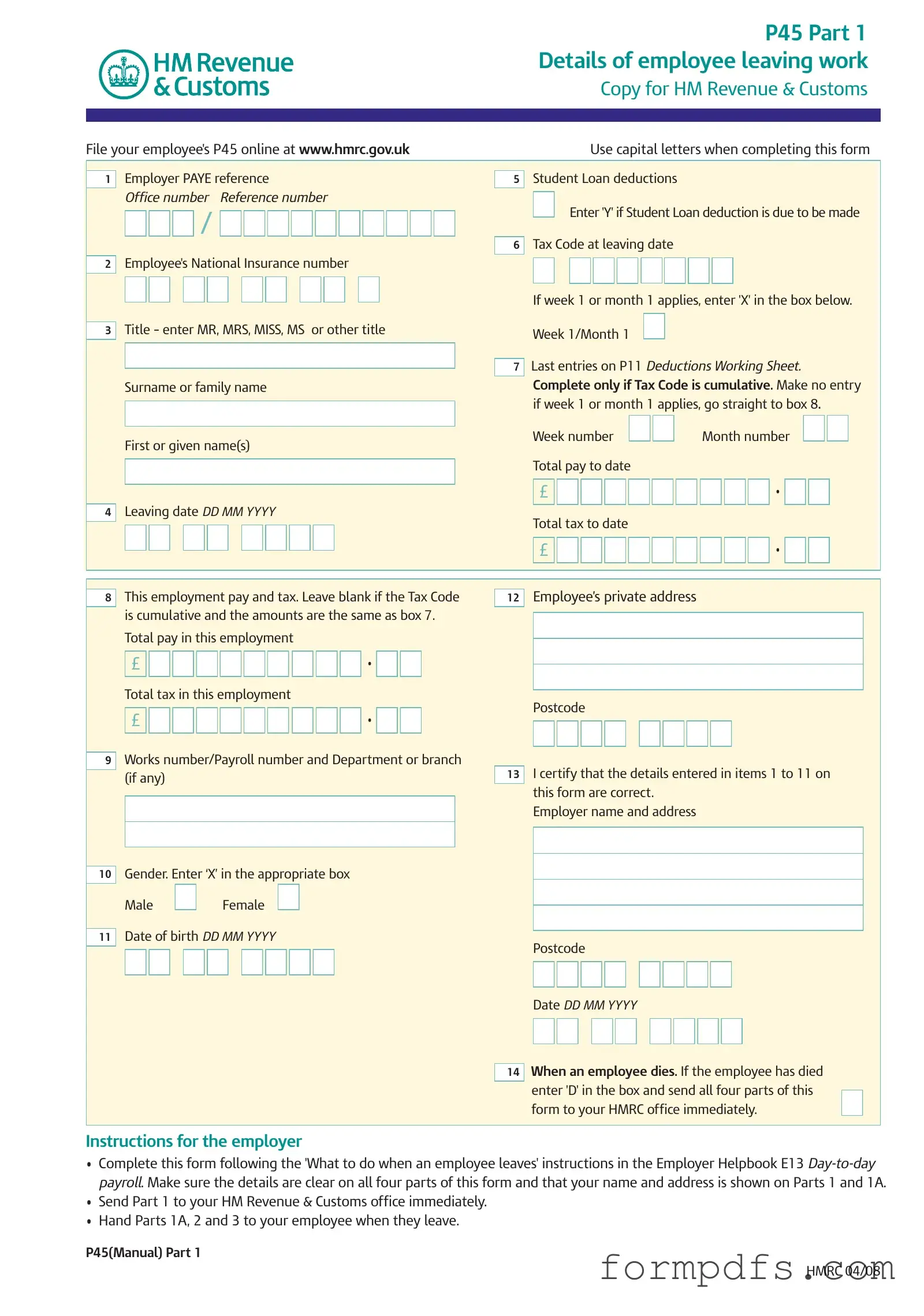What is the P45 form?
The P45 form is a document that an employer provides to an employee when they leave a job. It contains important information about the employee's tax and pay details. The form has several parts, with one part for the employer, one for the employee, and one for the new employer. This form helps ensure that the employee's tax records are accurate and that they do not pay too much tax when starting a new job.
Why do I need a P45?
A P45 is essential for several reasons. First, it helps you keep track of your earnings and taxes paid during your employment. Second, when you start a new job, your new employer will need this form to calculate your tax correctly. Without it, you may be placed on an emergency tax code, which could lead to overpaying taxes. Lastly, if you need to claim benefits or tax refunds, the P45 will serve as proof of your previous employment and earnings.
What information is included in a P45?
The P45 includes several key details such as your name, National Insurance number, tax code, total pay to date, and total tax deducted during your employment. It also lists your leaving date and the employer's details. This information is crucial for both you and your new employer to ensure that tax calculations are accurate moving forward.
What should I do with my P45 once I receive it?
Once you receive your P45, it's important to keep it in a safe place, as copies are not available. You should provide Parts 2 and 3 to your new employer when you start a new job. If you are not starting a new job immediately, you may need to take Part 1A to your local Jobcentre Plus office if you plan to claim Jobseeker's Allowance or Employment and Support Allowance.
What happens if I lose my P45?
If you lose your P45, you should contact your former employer to request a replacement. They are obligated to provide you with the necessary information to complete your tax records. If you cannot obtain a replacement, you may need to fill out a "starter checklist" with your new employer, who can help you with the correct tax code until your tax situation is clarified.
Can I receive a P45 if I leave my job due to death?
In the unfortunate event of an employee's death, a P45 can still be issued. The employer must complete the form and indicate the employee's death by marking 'D' in the appropriate box. This form should then be sent to HM Revenue & Customs immediately, along with all four parts of the P45.
What if my tax code is week 1 or month 1?
If your tax code is week 1 or month 1, you will need to indicate this on your P45 by marking an 'X' in the relevant box. This means that your tax calculations are based on your earnings for that specific week or month rather than cumulatively. It is important to ensure that this is correctly noted, as it can affect how much tax you pay in your new job.
